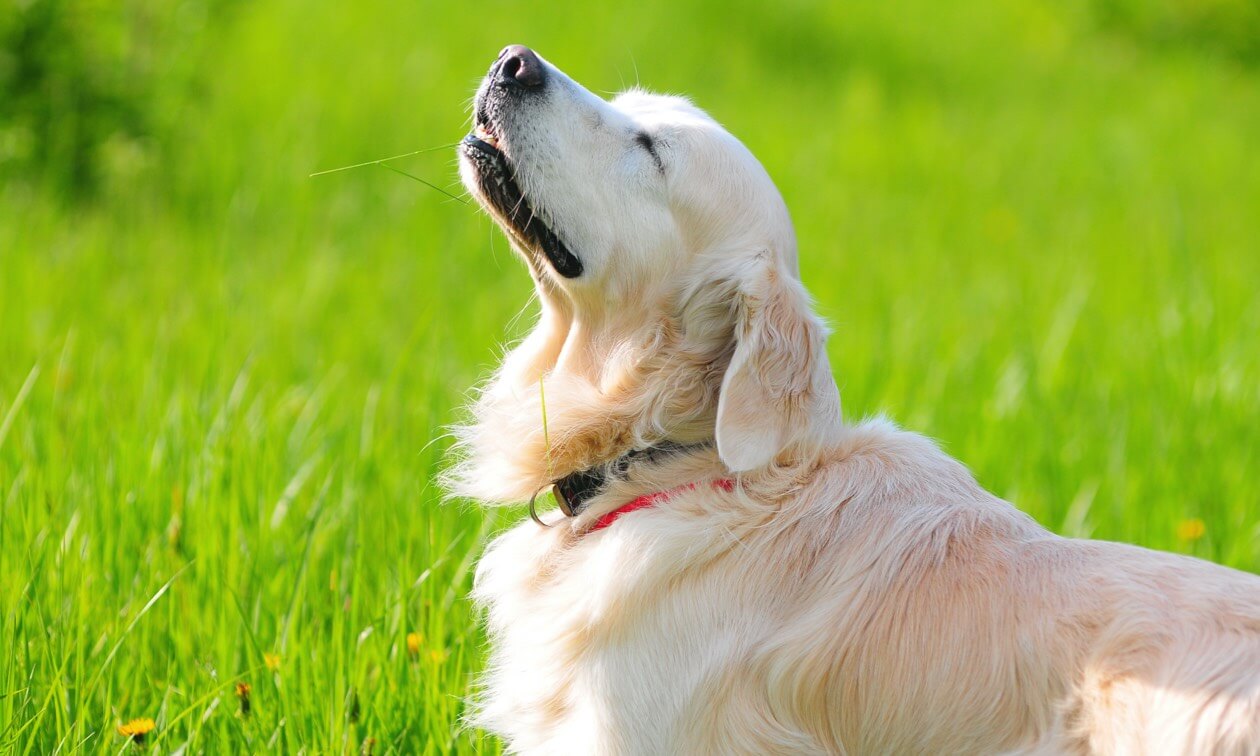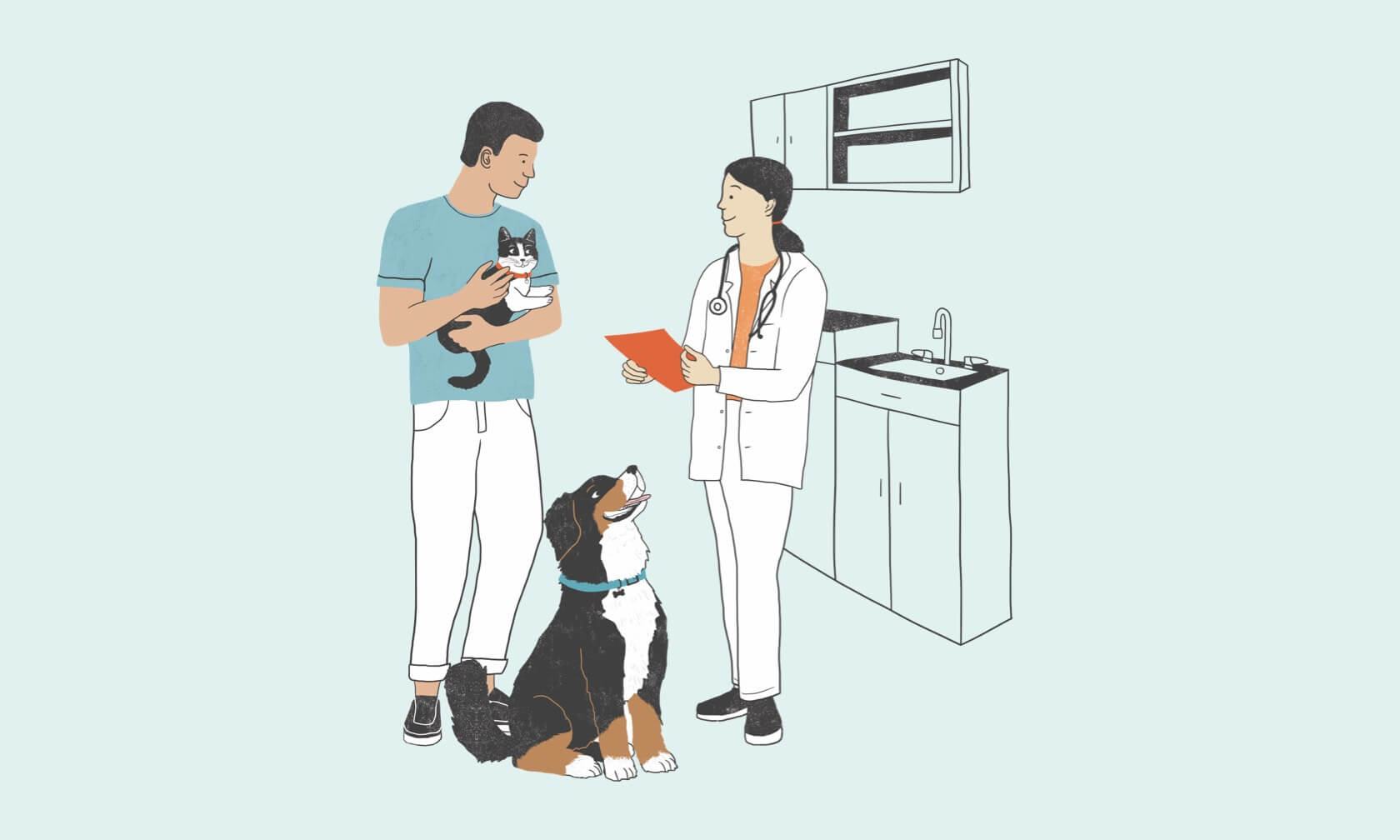Most pet owners are accustomed to their pet sneezing and don’t worry when it happens occasionally (and sneezes can be pretty adorable). But are you familiar with a reverse, or backward, sneeze? If you’re not used to reverse sneezing, it can be a little frightening. To take the fear out of the unknown, it’s helpful to understand what reverse sneezing looks like and why it happens to our pets.
What Happens When Our Pets Reverse Sneeze?
Reverse sneezing is the common term for the condition known as inspiratory paroxysmal respiration. It’s referred to as a reverse sneeze because air is rapidly pulled into the nose during inhalation. This differs from a regular sneeze, where air is rapidly pushed out through the nose. Frequently, reverse sneezing is caused by an irritant in the nasal passage and is harmless, but if it is prolonged or frequent your pet needs to see their veterinarian. Reverse sneezing is very common in dogs but can also occur in cats.
What Does Reverse Sneezing Look (and Sound) Like?
When your pet is experiencing an episode, they will normally stand still and extend their head and neck. Next, they will appear to be gagging and make a loud snorting sound as they inhale. The episodes last anywhere from a few seconds to a minute or so. After longer episodes, some pets will vomit. They’re typically fine and act as if nothing happened following an episode.
Reverse sneezing can sometimes be confused with other more life-threatening respiratory condition symptoms. If you note any of these other symptoms, call your veterinarian or seek medical care at an animal emergency hospital.
- Rapid breathing
- Increased abdominal effort when breathing
- Coughing, especially if it sounds wet or like a dry goose honk
- Abnormal, bluish gum color
- Exercise intolerance
- Weakness
- Fainting
- Collapse
What Causes Reverse Sneezing in Dogs and Cats?
The specific cause for reverse sneezing is unknown. It’s believed that any irritation to the soft palate, nose, sinuses, or back of the throat causes a hiccup–like spasm resulting in reverse sneezing. Some possible irritants include:
- Inhalation of foreign bodies such as seeds, pollen, or grass
- Smoke
- Strong odors
- Household chemicals
- Exercise
- Excitement
- Leash-pulling
- Allergies
- Dental disease
- Viruses or bacteria
- Fungal infections
- Secretions like post-nasal drip
- Nasal mites
- Masses or tumors
- Elongated soft palate
- Foreign body
- Brachycephalic breed
Any dog can be affected by this condition. Still, it appears to happen more commonly with smaller dogs, terriers, and brachycephalic (flat-faced) breeds.
How Is Reverse Sneezing Diagnosed?
Generally, diagnosis is based on your pet’s symptoms and medical history. Providing your veterinarian with a video of your pet having an episode is highly beneficial. Additionally, let them know where the episode took place and what happened just before it.
It’s important to rule out other medical conditions that cause snorting or abnormal breathing, like respiratory tract infections, laryngeal paralysis, collapsing trachea, nasals tumors or polyps, trauma, etc. Your veterinarian may recommend lab tests, allergy testing, x-rays, or other tests to confirm.
How To Manage Reverse Sneezing in Dogs and Cats?
The good news is that most cases of reverse sneezing don’t require medical treatment. The prognosis is usually good for the causes of reverse sneezing.
When your pet begins experiencing an episode of reverse sneezing, they may get anxious. Speak calmly, gently stroke their neck, and attempt to help them relax. You can also try hugging them or exposing them to cool air, such as standing in front of an open refrigerator or freezer. Changing the environment by stepping outside or coming inside can help. Some owners have found that gently and lightly covering their pet’s nose stimulates the swallowing reflex and stops the reverse sneeze. Also, trying to get the dog to swallow will stop the reverse sneezing.
If your dog reverse sneezes frequently, for long periods of time or has other signs you should speak with your veterinarian. Sometimes, your pet may need anti-inflammatories, antihistamines, or decongestants to help with the condition.
ZPC-02500



